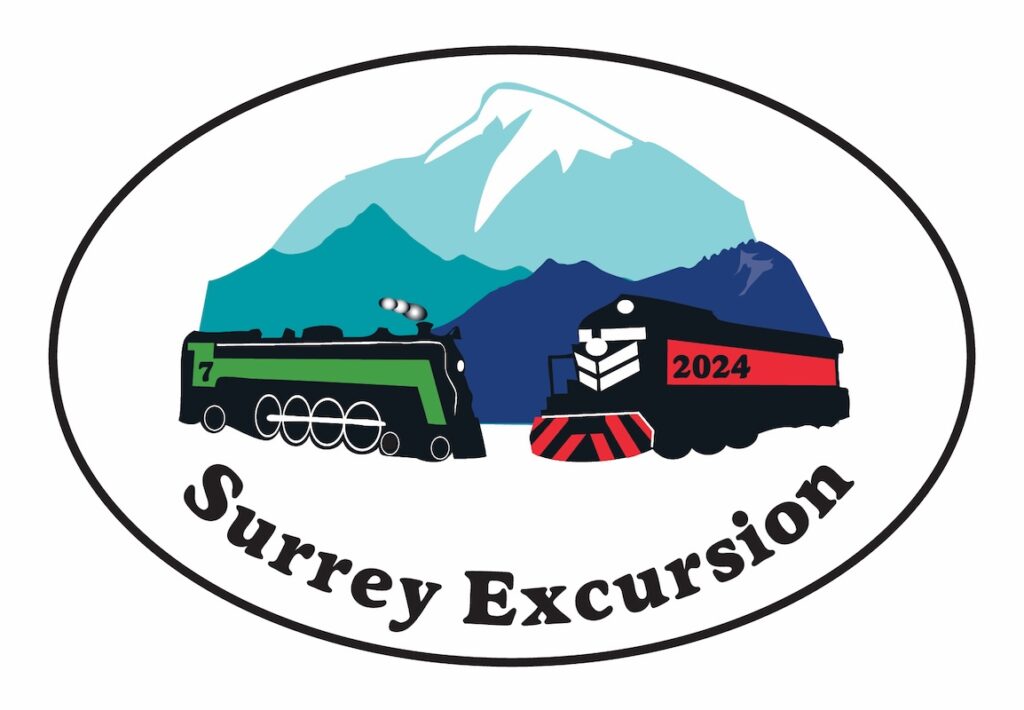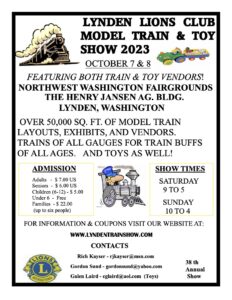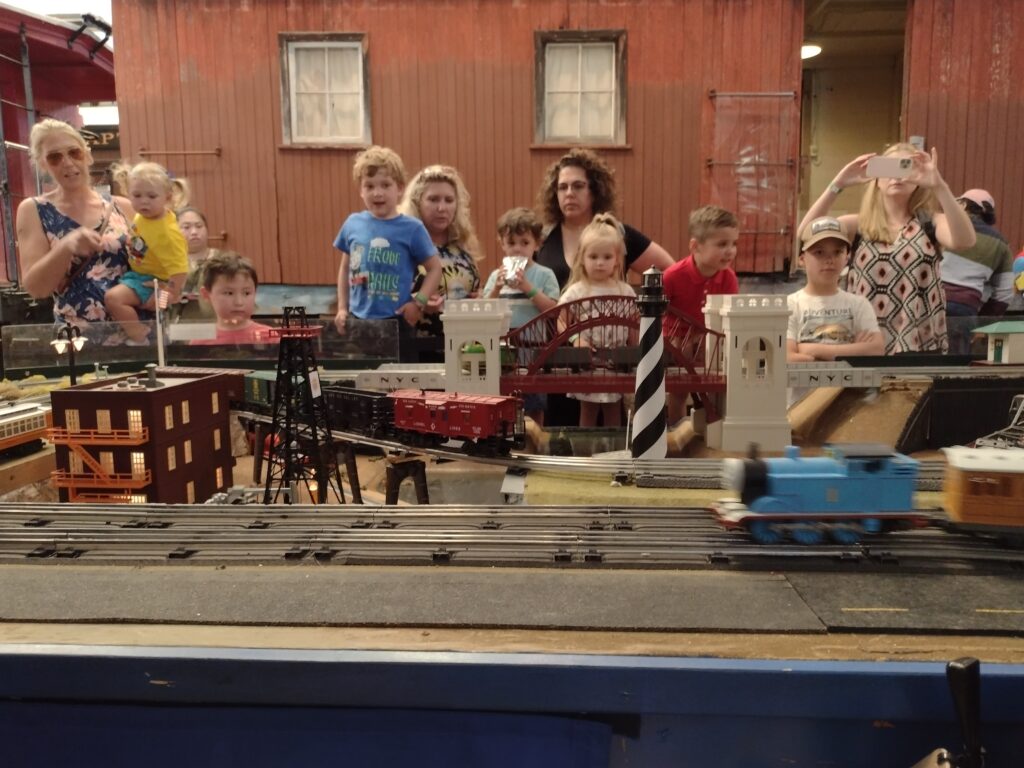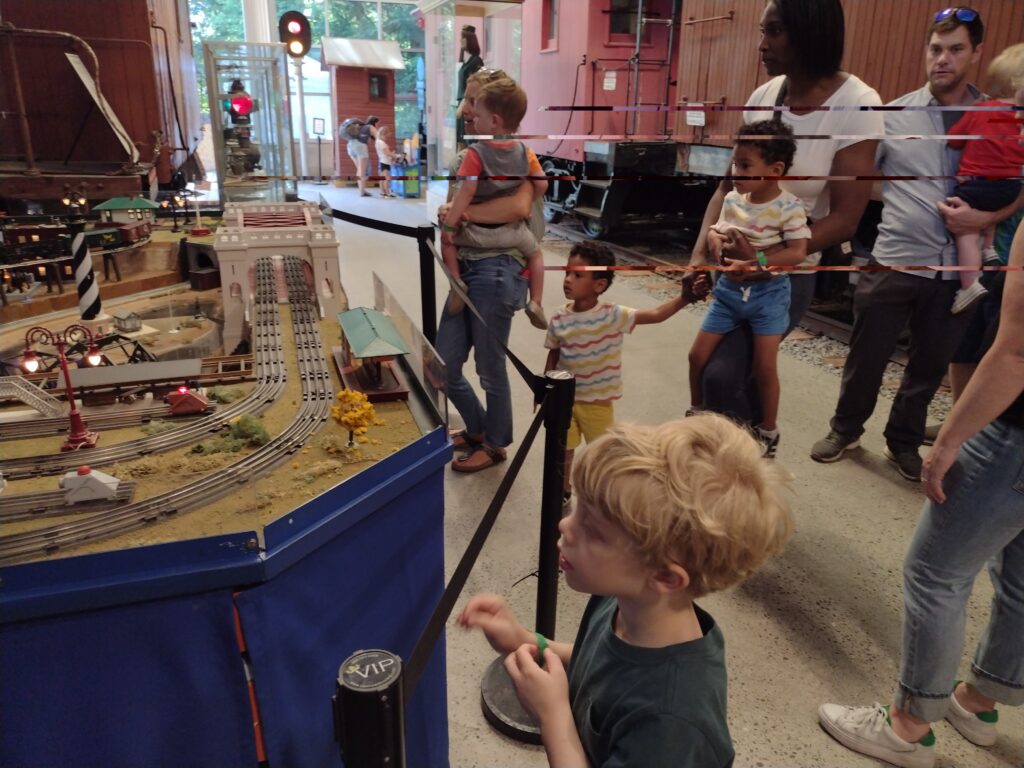By Dan Peters
As everybody by now knows, 2023 is being celebrated as the 150th Anniversary of the completion of the Northern Pacific Railroad. The first of the “Northern Transcontinentals”, they held their “Completion Ceremony” on Sept. 8, 1883 at Gold Creek, MT.
There was no “Gold Spike” like there was at the completion of the Union Pacific / Central Pacific line in 1869. Instead, they used the same exact iron spike that had been driven at the start of construction. The “Last Spike” was driven in place by Henry C. Davis, who had driven in the “First Spike” in Minnesota in 1870. Other dignitaries were NP President Henry Villard, Chairman Of The Board Frederick Billings, and former President Of The United States Ulysses S. Grant.
2023 also marks the 30th anniversary of the Fourth Division Hi-Railers module group. We don’t have a “Golden Track Pin” to celebrate. But we do have an anniversary celebration, and you can participate.
The Hi-Railers have reserved seating on the Steam Train pulled by Northern Pacific steam engine 924. The trip will take place Saturday June 17, 2023, at 10:00 am.
Northern Pacific 924 was built by Rogers Locomotive Works in 1899. It worked in Minnesota for many years, and later worked in Seattle and Tacoma. It was later sold to the Inland Empire Paper Co. Retired in 1969, it was on static display exposed to the weather until 2014. A major rebuilding project involving thousands of volunteer hours and plenty of money, fully restored this engine in 2020. At the same time, it was converted to run on wood fuel instead of dirty, messy coal. There are dozens of steam engines preserved in Washington, but as of now this is the last one that still operates.
Spokane Portland & Seattle coach 213 was built by Barney & Smith in 1912. ( As I’m told, the same year as The Titanic. ) Of wood construction, there is no air conditioning other than “opening the window”. We have reserved seating on this coach, which runs right behind the steam engine, which should provide plenty of opportunity for audio recording.
The Northwest Railway Museum Steam Train only runs half-a-dozen times a year. We’ve scheduled our summer get-together for Fathers Day Weekend. And because of the Northern Pacific anniversary, we’re inviting our Fourth Division fellows to participate, too.
If you want to join our group train ride, you will need to buy a ticket at the Museum web site. Membership passes are not honored, since Steam Train rides are considered a “special event” and not a “regular train”.
To get a ticket to ride this special train ride :
- go to web site https://www.trainmuseum.org
- click on “Programs”
- click on “Steam Train Ride”
- click on “Buy Tickets for North Bend Depot”
- right arrow to “June 2023”
- select “June 17”
- select “10:30 am”
- complete your purchase
Your email confirmation is your ticket. Print it out, or save it to your phone to show to the ticket agent.
Our trip will begin and end at the Railway History Museum Campus. NOT at the North Bend Depot.
Northwest Railway Museum
9320 Stone Quarry Road
Snoqualmie, WA 98065
On Highway 202, go east from the Snoqualmie Depot about 1 mile. East of Meadowbrook Way, near the Junior High School, turn south on Stone Quarry Road ( the sign is small ) about 1/3 mile to the museum parking lot. We will board at the yard outside the museum building before the first “public” departure. Boarding time ( from the Employee Timetable only ) is 10:00. Don’t be late.
There should be plenty of photo opportunities before train time, as the steam engine switches the passenger cars into the train consist, starting at 8:30. Our train ride will complete around 11:30 or 11:45, followed by additional time to view the exhibits inside the museum building, a group picnic at the picnic grove, and viewing of train run-by’s that afternoon.
Hope to see you then.
Dan








